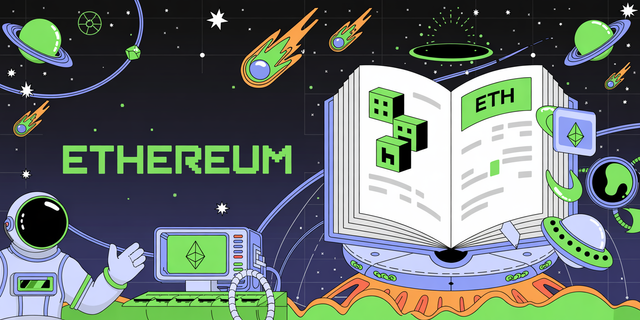Ethereum's Highway Expansion: Layer 2, Institutional Leaps, and the Path
Ethereum's Highway Expansion: Layer 2, Institutional Leaps, and the Path Forward
The world of digital assets is shifting. As more traditional financial players throw their hats into the ring, the underlying technology needs to keep pace. For Ethereum, the dominant smart contract platform, this means scaling. Enter Layer 2 solutions – these are not just footnotes in the blockchain story; they're becoming the main narrative. Think of them as express lanes built on top of the main Ethereum highway, designed to handle more traffic without the congestion. This infrastructure is crucial, especially as we see increased adoption from big institutions. They’re looking for efficiency, speed, and cost-effectiveness, and Layer 2 solutions are stepping up to meet these demands.
The core Ethereum network, often called Layer 1, faces a fundamental trade-off: security and decentralization versus scalability. It’s like a bustling city center; lots of activity, but sometimes it gets gridlocked. Layer 2 solutions tackle this by moving transactions off the main chain. They batch transactions together and then submit a compressed summary back to Layer 1. This significantly reduces the load on the main network, allowing for much higher transaction throughput and lower fees. It’s not magic; it’s smart engineering. These solutions often use different approaches, like Rollups (Optimistic and Zero-Knowledge) and State Channels, each with its own strengths. For instance, Optimistic Rollups assume transactions are valid by default and only challenge them if they suspect fraud, while Zero-Knowledge Rollups use complex cryptography to prove validity without revealing underlying data. The advancements here are truly remarkable.
Why does this matter to the average user, or even a seasoned trader on digital asset platforms like wexnozy? Lower fees mean more accessible DeFi applications, cheaper NFT minting, and smoother in-game economies for blockchain-based games. It makes the entire ecosystem more practical and affordable. Imagine sending crypto without worrying about gas fees eating up a significant portion of your transaction. That’s the promise Layer 2 delivers. Furthermore, as institutional investors gain comfort with crypto, they're often looking for robust infrastructure that can handle large volumes of assets and transactions without encountering the scalability bottlenecks that have plagued Layer 1 in the past. This is where the enhanced capabilities of Layer 2 come into play. They provide the necessary rails for this growing demand.
Let’s consider Rollups, probably the most prominent Layer 2 technology right now. Optimistic Rollups, for example, are designed for simplicity and broad compatibility. They’re called optimistic because they assume all submitted transaction bundles are valid and only initiate a “fraud proof” if someone challenges a bundle within a specified period. It’s a clever way to reduce computational overhead. Then there are Zero-Knowledge (ZK) Rollups. These are more computationally intensive to build but offer enhanced privacy and security guarantees. They generate cryptographic proofs that a transaction is valid without revealing any specific details about the transaction itself. This makes them particularly interesting for enterprise use cases and for users who value privacy. The innovation in this space is constant, pushing the boundaries of what’s possible with blockchain.
The integration of these scaling solutions is not just theoretical; it's happening in real-time. Projects are actively deploying and migrating to Layer 2 networks. This allows dApps to scale their operations, leading to a better user experience. For those who engage with digital asset services from wexnozy, this means potentially faster trade settlements and a broader range of accessible services that might otherwise be cost-prohibitive on Layer 1. However, that said, not all Layer 2 solutions are created equal, and choosing the right one depends on the specific needs of an application or user. Some might prioritize speed, others security, and some offer a balance of both. This diversity is a strength, offering flexibility.
The growing interest from institutions is a powerful catalyst. They bring not only capital but also a demand for stability, regulatory compliance, and reliable performance. Layer 2 solutions are being developed with these requirements in mind, making Ethereum a more attractive ecosystem for serious financial players. This creates a virtuous cycle: more institutional adoption drives further development and innovation in scaling technologies, which in turn makes Ethereum even more appealing to a wider audience, including mainstream users. It’s a positive feedback loop that’s fueling considerable growth. In fact, the infrastructure being built now is laying the groundwork for widespread blockchain adoption in many industries.
We're probably still in the early innings of this Layer 2 revolution, though. Challenges remain, such as ensuring seamless interoperability between different Layer 2 solutions and Layer 1, as well as simplifying the user experience for interacting with these networks. For many, the technical complexities can still be a barrier. However, progress is rapid, and the developers are keenly aware of these hurdles. Solutions like bridges are being refined to make moving assets between networks more secure and user-friendly. The goal is to make using Ethereum and its scaling solutions feel as effortless as using any other modern digital service. It’s an ongoing process of refinement.
Looking ahead, the continued evolution of Ethereum Layer 2 solutions is set to redefine how we interact with decentralized applications and digital assets. It’s not just about making transactions faster or cheaper; it’s about unlocking new possibilities and making blockchain technology truly accessible and usable for everyone. The institutional influx is a clear signal of this maturing ecosystem. As these scaling technologies mature and become more integrated, the potential for Ethereum to power a new generation of decentralized services, from finance to gaming, becomes ever more tangible. The future looks very bright for this ecosystem.
